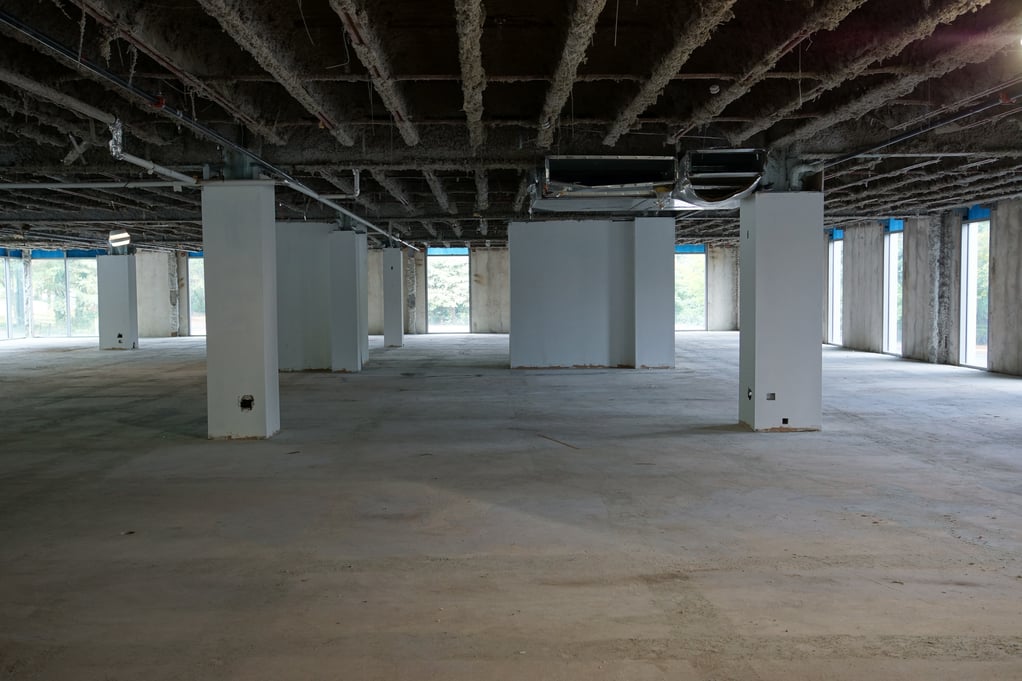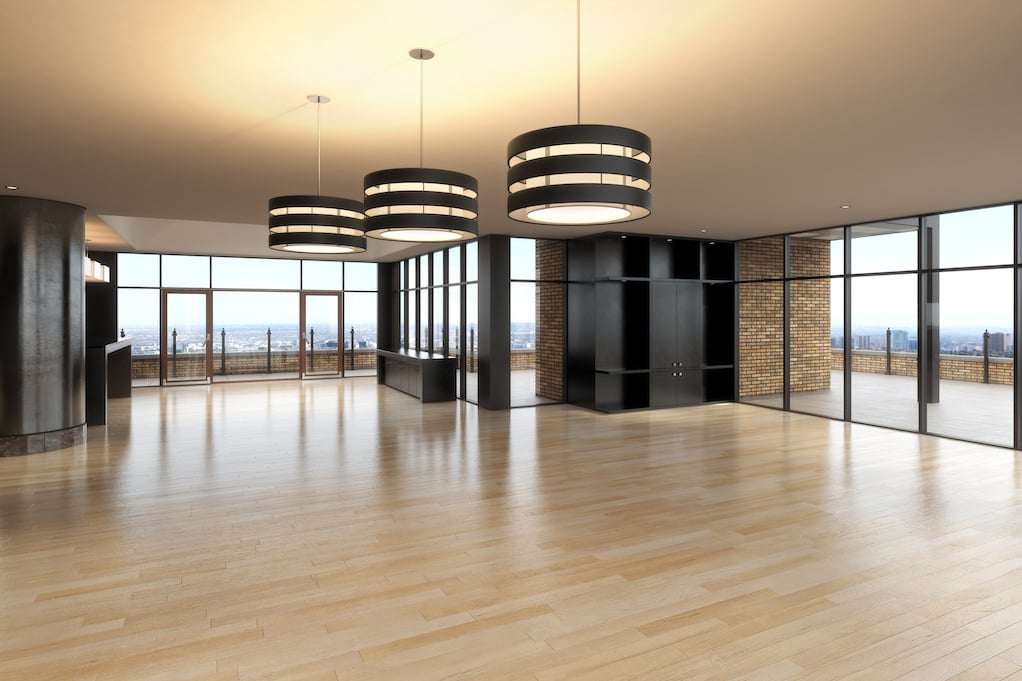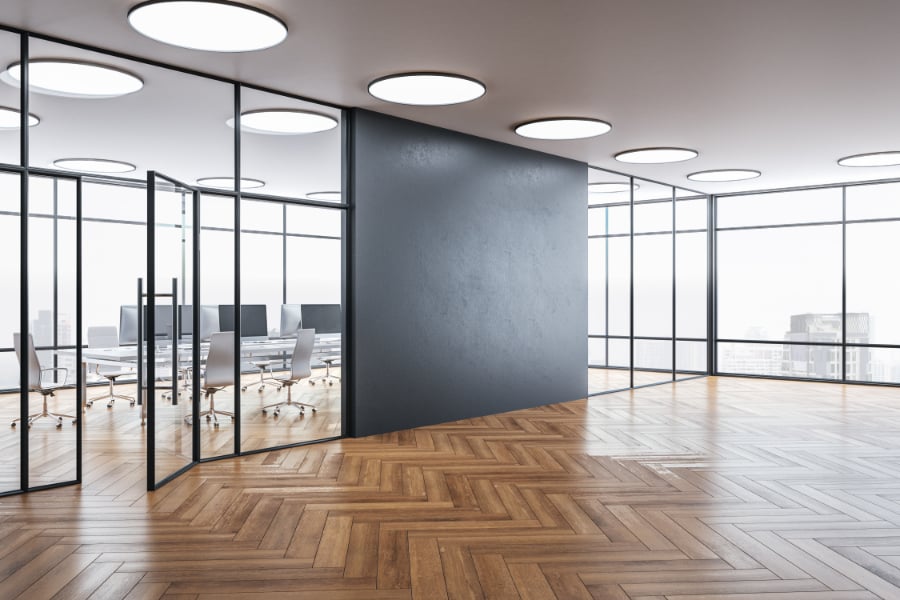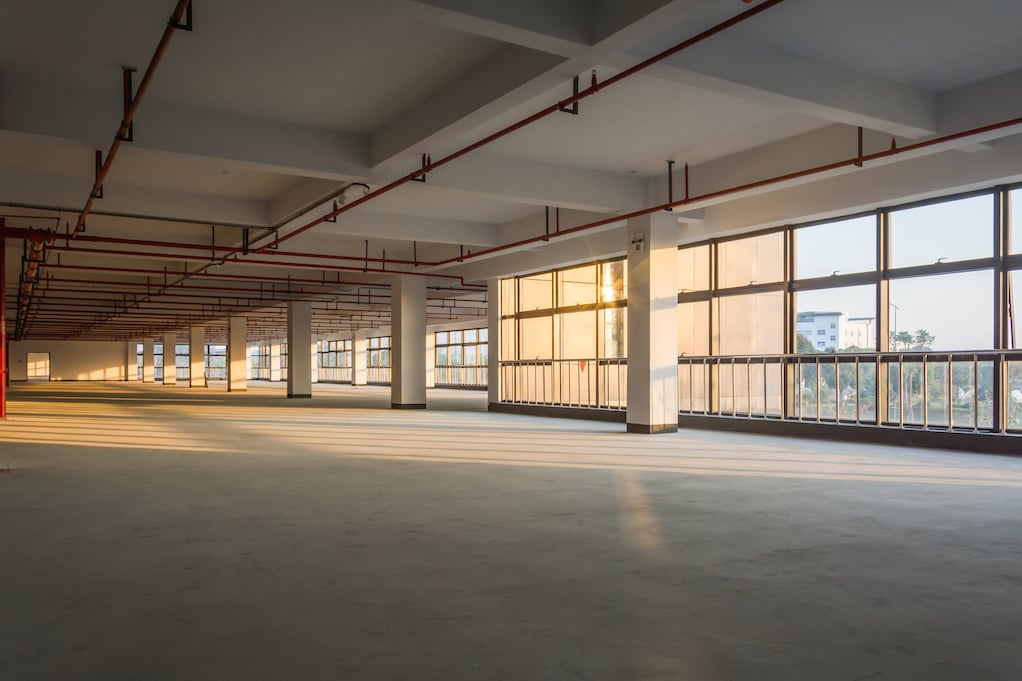As a commercial tenant, you know that one of the first hurdles you confront when looking for space is the property’s initial state. The condition of the property you choose will dictate:
- When you can move in
- How much you can expect to receive in tenant improvement allowance
- How competitive negotiation will be a
- The amount of work to be completed before you can move in
- And so much more...
So, if you’re looking for shell space, this is your complete guide. We’ll discuss the different shell conditions that office buildings can be presented in, and what that means for you as a tenant.
Whether you’re preparing for a build-out, looking for space, or weighing your options, this is critical information. Read on to learn a little bit more about how shell spaces will influence your responsibility, time commitment, and overall price.
Shell States
A property in a shell state is just its basic framework; it lacks any interior finishing that would make it habitable. They are either newly constructed or gutted from the previous tenant. There is a spectrum of shell states that exist, and your rental rate and tenant improvement allowance will vary depending on how move-in ready the space is.
But, first, the condition of your office, is unfortunately, only one of many factors to consider when finding office space. So, don't risk losing out on the best properties and prices. Prepare yourself to find the perfect office space and optimize your portfolio in the free course below.
Cold, Dark Shell
This is the most basic form that a commercial property can take. A cold, dark shell lacks HVAC, ceilings, interior wall finishes, and lighting. While this type of shell provides the tenant with great flexibility to adapt the space to their needs, it requires the most renovations and upfront expenses.
This is why it is so critical to state in your work letter which property condition your work letter begins. Your landlord should fund (at a bare minimum) the hard costs necessary to get your building in a livable state. If your landlord only covers the expenses up until the state is a cold dark shell, then you are essentially getting stuck paying for capital expenditures to their building.
If the building is in bare condition and you are offered a large sum of TI dollars, most of the funds will be devoted to getting their property in working order. Construction costs may eat away at your TI offer while the landlord benefits because the space is more habitable when you leave. So your work letter should cover costs at least to the warm vanilla shell condition. Learn Why Landlords are Getting More Generous With Tenant Improvement Allowances.
To recap:
- Cold shells consist of only the building's structural elements and little else.
- They are often used in new construction projects where the landlord has not yet made any tenant-specific modifications to the space.
- Because cold shells lack any sort of climate control or finishes, tenants must invest significant time and money to customize the space to their needs.
- The tenant should be aware where their work letter begins beyond the point of a cold, dark shell.
- In general, cold shells are the most affordable option for commercial space, with rental rates starting at the lowest point on the spectrum.
- It's critical to consider the costs of renovating a cold shell when evaluating whether it's a good deal. Upfront expenses can be substantial, and there is a risk of unforeseen complications arising during the renovation process.

Cold Shell
A cold shell is similar to a cold, dark shell, but with lighting. It still lacks HVAC, ceilings, interior wall finishes, and heating. This type of shell provides the tenant with more options for adaptation and still requires considerable renovations to make it move-in ready.
Warm, Vanilla Shell
A warm, vanilla shell is more move-in ready than the cold shells. Less work is required of the tenant before they can occupy the space. A warm, vanilla shell is typically equipped with a ceiling, lighting, basic interior finishes, plumbing, HVAC, painted walls, electrical outlets, restrooms, and concrete or finished flooring. While there is still room for customization, this shell requires less upfront work to make it move-in ready.
Another advantage of warm, vanilla shells is that they typically have more features and amenities than a cold, dark shell. For example, they may include restrooms, plumbing, electrical outlets, and finished flooring. This can save tenants time and money in the long run, as they won't have to install these features themselves.

While the basic finish provides a good starting point, tenants can add their own finishes, colors, branding, and layouts to create a space that reflects their company culture and values. This can lead to a more engaged and productive workforce, which can ultimately benefit the tenant's bottom line.
Vanilla Box
Similar to the vanilla shell, a vanilla box includes everything in the warm, vanilla shell but may exclude the HVAC system. This type of shell requires more work from the tenant to make it move-in ready, but it provides more flexibility for customization.
Fully Built-Out Space
Worth mentioning, a fully built-out space has all of the interior finishes that you need to move in right away. It comes equipped with the ceiling, lighting, interior finishes, plumbing, HVAC, painted walls, electrical outlets, restrooms, and flooring. The least amount of work and upfront costs are involved with this choice, but the rental cost will reflect that.

Why is Shell Condition Important?
As a tenant, it’s important to understand the shell condition of your leased property. The more work required to make the space move-in ready, the more upfront expenses you’ll need to take on. Depending on your budget and timeline, you may want to consider a more move-in ready shell or a fully built-out space.
|
By understanding the different shell conditions and what they offer, you can make an informed decision that meets the needs of your company. |
The shell state of the space is one of the primary factors that determine the tenant improvement allowance. The more unfinished the space is, the higher the tenant improvement allowance will need to be to make it move-in ready. Conversely, the more finished the space is, the lower the tenant improvement allowance needed.
For example, a cold shell will require a much higher tenant improvement allowance to make it move-in ready, compared to a warm, vanilla shell which will require much less renovation. As a result, the tenant improvement allowance for a cold shell will be much higher, which will impact the overall rental rate.
Your lease length will also play a big role. Don’t expect your landlord to commit to funding major renovations for a short-term lease.
When negotiating a lease, it's important for tenants to understand the different shell states and how they impact the tenant improvement allowance. Working with a true tenant rep broker can help tenants negotiate a favorable tenant improvement allowance and overall lease terms that meet their needs.
Key Takeaways:
- The condition of the property is a critical factor in determining when you can move in and what tenant improvements you can expect.
- Understanding the various shell conditions is vital in negotiating lease terms and rental rates that are favorable for your business.
- Cold, dark shells provide the most flexibility for customization, but require significant upfront expenses.
- Warm, vanilla shells are more move-in ready and require less renovation work, but may have a higher starting rental rate.
- Make sure your work letter covers (at a bare minimum) the cost to get your space to a warm, vanilla shell.
- Choosing the right shell condition for your business's needs can save you time, money, and resources in the long run.
How Tenant Reps Get the Most Out Of Your Shell Space
The shell state of a property can significantly impact a tenant's ability to negotiate favorable lease terms and ultimately save money. So, tenants should be prepared with a well-versed professional who can fully protect their interests.
A True Tenant Rep™ has the expertise and knowledge to navigate the nuances of different shell conditions and understand their impact on the tenant improvement allowance and other lease terms. By working with a True Tenant Rep™, tenants can ensure they are getting the best possible deal on their lease and avoid the potential pitfalls of working with a conflicted landlord's broker. As the real estate industry continues to evolve, it is more important than ever for tenants to have a trusted advisor on their side to help them navigate the complexities of commercial real estate leases. So, reach out today and learn why we save our clients an average of 30% of their total CRE costs.









